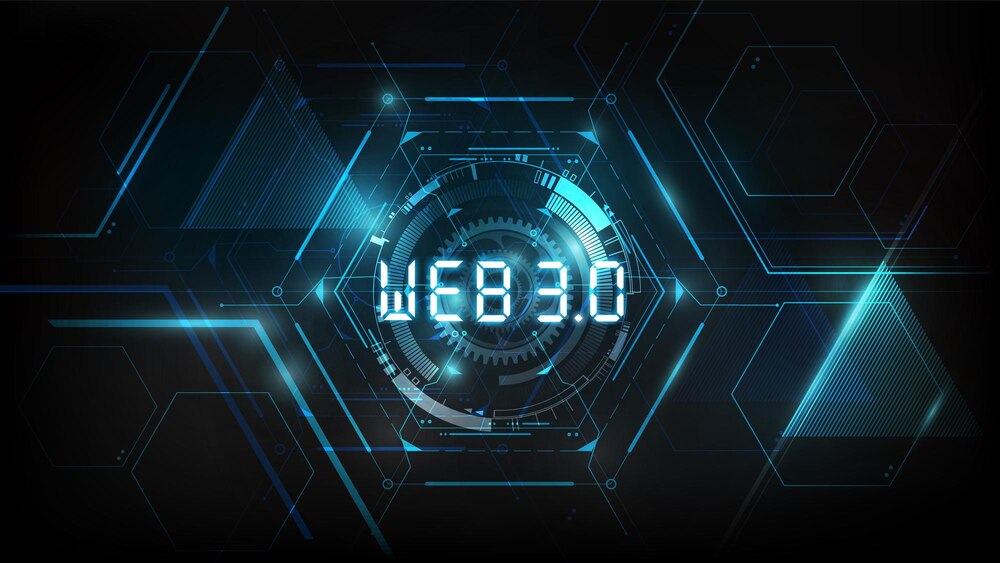The majority of people nowadays find it impossible to imagine living without the Internet. The world has changed into a web of information. Earlier, when the web was not introduced, the internet was limited to text and fewer user interactions. Later, in 1989 the introduction of the web changed the game. Now internet was not only a research tool but a technology that is accessible to everyone and everywhere to find information.
Later, as web technology progressed and transformed, new ways for internet users to connect with one another were added. Currently, there are three phases of Internet development Web 1.0, Web 2.0, and the most recently introduced stage Web 3.0. It becomes necessary to look back at earlier times as well as compare them with what’s coming since Web 3.0 is becoming a growing trend as security and blockchain development are gaining popularity.
We are going to discuss the functionality & features of Web 2.0 and also distinguish between Web 3.0 vs Web 2.0 to understand why we need Web 3.0 for the development of our businesses. Let’s start with a definition of Web 2.0 to understand what is the difference between both.
What is Web 2.0?

The second generation of website models is referred to as Web 2.0, a name Tom OReilly first used in 2004. Web 2.0 websites emphasize content created by users, usability, and compatibility for end users. It is basically created for the end user’s experience.
Communities, partnerships, communication, and social media were made possible by this web form. Web 2.0 is therefore regarded as the main way that individuals interact with the internet today. Web 2.0 is termed “the participative social web” as it allows for interaction and cooperation in social media chat to produce user-generated content for a social network. Web 3.0 is an advanced form of Web 2.0 similar to Web 2.0, an advanced version of Web 1.0.
What is Web 3.0?

Web 3.0, commonly referred to as Web3, is based on the fundamental principles of decentralization, transparency, and enhanced user usefulness. Web 2.0 is called a social web similarly Web 3.0 is called a read-write-execute web. With web3, the data will be stored on blockchain networks. Users will now be the actual owners of their personal data. It is up to the owners to decide how they want to distribute it.
In the comparison of Web 3.0 vs Web 2.0, there is no technological difference and it has minimum impact on user experience but Web 3.0 makes use of distributed ledger and encryption technologies to overcome the issues with reliability & has identical change on the backend. Additionally, it emphasizes enhancing user security & privacy.
Web 3.0, sometimes known as the semantic web, aims to make the content of the Internet machine-readable, and claims to make information about the whole world more significant. This includes an act focused on accessing material through various non-browser applications, the transformation of a network into a database, and the addition of technologies like artificial intelligence, blockchain development services, machine learning, and 3D networking.
Web 3.0 vs Web 2.0: What’s the Difference?
In the race of which is better for your business, Web 3.0 vs Web 2.0 both are equally beneficial depending upon the need of your business. One is the root and the other one is advanced. You can decide which is the suitable one with the help of the following comparison.
| Topic | Web 3.0 | Web 2.0 |
| Introduction | It is a read-write-execute Web. | It is read & writes Web. |
| Focus | The main focus of Web 3.0 is on providing authority to the users. | The main focus of Web 2.0 is on the development of the community. |
| Ownership | The authority of the content is with the individual user who creates it. | The ownership data is in the hands of tech giants. They use & control these contents in the way they wish to. |
| Types of applications | Platforms for communication, video streaming, podcasting, and content creation are common in Web 2.0. | Most of Web 3.0’s apps (dApps), including 3D portals, interactive games, and multiple-user-friendly virtual worlds, will be AI and ML-driven. |
| User interface | Web3 is comparatively slow as it is in the development stage. It has less impact on the user interface but provides the control of data in the user’s hands. | With real-time information updates, Web2’s dynamic user interface offers an outstanding user experience. Tech-powerful companies have control over the information that is exchanged |
| Transparency | As the user has the authority over data it is quite obvious that the transparency with Web 3.0 vs Web 2.0 is more. Users can easily access irreversible data entries with the help of Blockchain technology. | Comparing Web 2.0 and Web 3.0 here doesn’t make sense as the owner of the content is big companies and they do not disclose how they use the content. |
| Technologies | Artificial intelligence, machine learning, 3D networking, Blockchain development technology, and decentralized apps (dApps) are used prominently in Web 3.0 | The common technologies used in Web 2.0 is CSS, HTML, Ajax, and JavaScript. |
| Security | With the help of blockchain development solutions, it provides powerful security with makes it more safe from hackers as compared to Web 2.0. | Here, the control is with the centralized authority and they only decide security measures which means the guarantee of safety is nowhere. |
Web 2.0 vs Web 3.0, How it Matters for Your Business?
The technology evolution brings opportunities for all businesses, like Web 1.0 helped Amazon and others, and Web 2.0 benefited Facebook and other social media apps. The new inventions are going to evolve with Web 3.0. You can build any decentralized application you wish to with Web3 and achieve heights by investing in the semantic web.
New business models based on sharing of information and integration are likely to arise from the enhanced capacity of Web3 technology. Small enterprises will be able to reduce operating expenses and enhance their ability to compete. The main difference between Web 3.0 vs Web 2.0 is Web3 business potential will be supported by decentralized blockchain technology.
Businesses will have better tools for managing and utilizing their data to enhance their products and offerings, also they will easily reach their target customers through advertisements via mobile devices. Companies based on information will be able to provide fresh ideas and services that were not possible with Web 2.0. A better understanding of client requirements will enable organizations to develop personalized goods and services. This will improve their relationship with the clients thereby increasing sales & revenue.
What are the Benefits of Web 3.0?
Web 3.0 bring a wide range of benefits for businesses and organizations of all levels. Some of the benefits are given below:
The monopoly of technology giants will end:
Centralized platforms had authority and control of users’ data and were able to exploit it or sell it to outsiders for revenue. This data monopoly will end with the adoption of Web 3.0. The total control of data will be in the hand of users, thanks to decentralization. It will empower users with the ability to decide which content they need to share with others for business growth.
Reduced third-party involvement:
Businesses who care connected with Web 2.0 had to share their revenue with third-party authorities. This will no longer be required in Web 3.0 as it integrates clients and businesses directly.
Enhanced security measures:
Data breaches and hacking will decline with Web 3.0 as it provides heightened security and privacy measures. With the help of decentralization, there will be no scope for hackers.
Mobile Application Security
Business processes run smoothly:
Alike Web 2.0, businesses will not have to spend a lot of time and effort on managing business operations instead with the help of technologies like smart contracts, distributed ledgers, etc they can smoothly create and manage business operations with ease.
Better visibility:
The content in Web 3.0 has zero transparency that how is it used and where it goes which is not continued in Web 3.0. This technology assures you better visibility of your transaction records with the help of Blockchain development solutions enabling everyone to monitor all transactions.
Conclusion
The web landscape is dynamic and will forever bring new opportunities for your businesses. After knowing the history of the web you might have a clear view of what web version will help you. No matter if you are a small-scale company or a well-established enterprise Web 3.0 can be beneficial for you if you are thinking to advance your business.
In the comparison between Web 3.0 vs Web 2.0, the major difference is it enables businesses to run smoothly by eliminating the middleman and allows direct interaction between the computers. This provides better integration and interaction between the workers, and clients resulting in a proficient organization.
Blockchain In Finance
The applications that are currently hitting the market like Facebook and Twitter are all controlled by centralized authorities as they are built with Web 2.0 technology. You can now create decentralized apps for social media, communication platforms, currency exchange apps, web browsers, data storage drives, streaming services, etc all with Web 3.0 by approaching a blockchain development company who are aware of the Web3 and trending technologies to create a dApp with extraordinary features.
Frequently Asked Questions
What do you mean by a decentralized web app in Web 3.0?
Users will control their own information on Web 3.0 because it is a decentralized network. Decentralized data networks allow different data providers to sell or transfer their data without giving up ownership or depending on middlemen.
Write Features and pitfalls of Web 3.0.
Features of Web 3.0 are as follows:
* Read, write, and execute web technology.
* Run on blockchain technology.
* Taking advantage of a decentralized network gives owners access to information over 3D graphics and visual appeal.
* Utilizes artificial intelligence (AI) to deliver quick outcomes and precise immediate feedback.
* Support for a semantic web that takes word meanings into account.
* Utilizing modern authorization techniques to safeguard user information along with identity.
Drawbacks of Web3 are:
* To access Web3, users will require a device with stronger hardware.
* It could be a little bit difficult to figure out, manage, & control it for beginners.
quick access to individuals’ general data and private information
Read More:-



